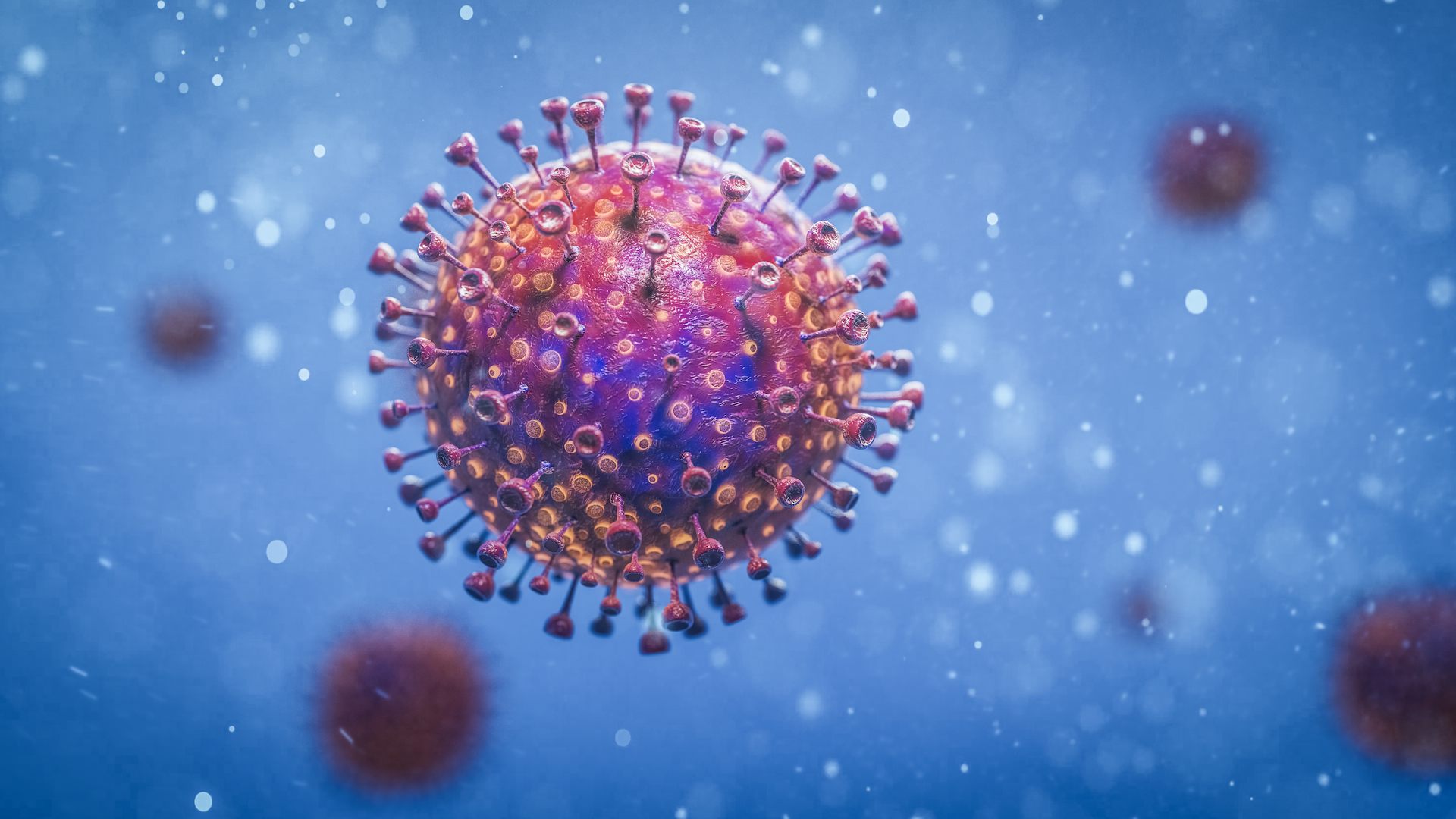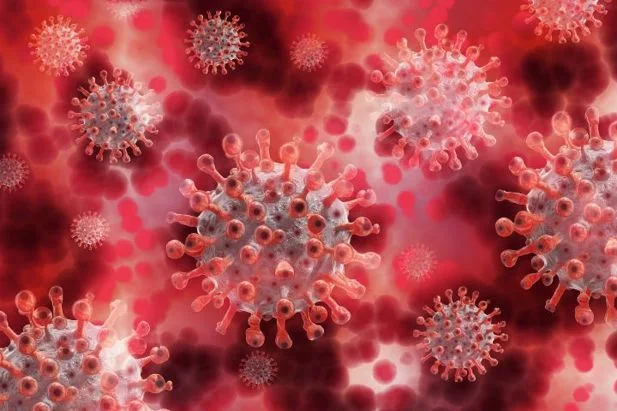If you've fallen for the Intelligent Design hoax and so believe viruses like the SARS-CoV-2 virus that caused COVID-19 were intelligently designed, you probably should be deeply in awe at the lengths to which your putative designer is going to find a super new version that can evade our antibodies acquired from vaccines and earlier infections - antibodies produced by an immune system you believe it created to protect us from the pathogens it creates to make us sick, obviously - and so make even more people sick, ruin even more economies and scupper economic recovery.
We've had in sequence since the initial wave, several waves as new variants emerged, including Delta and most successful to date, Omicron, which is now in the latest of several new subvarieties.
Of course, to anyone who understands evolution, this is nothing more than what is expected as the virus mutates within a selective environment and the most successful becomes the dominant variant. Mutations arise because of copying errors and hybrids arise when two different variants infect the same cell and their genomes get mixed up in their descendants.
To an ID cultist, however, this explanation must be rejected in favour of one in which their imaginary creator actively redesigns the virus to overcome new challenges.
In this article, reprinted from The Conversation under a Creative Commons license, reformatted for stylistic consistence, Victoria Easton, Virology Research and Teaching Fellow in the School of Molecular and Cellular Biology, University of Leeds, UK, looks at the emerging variants and discusses whether we should be concerned or not. The original article can be read here:

XBB and BQ.1: what we know about these two omicron ‘cousins’

Credit: Mahir KART/Shutterstock
Victoria Easton, University of Leeds
In late October, the UK Health Security Agency assigned variant designations to two new omicron “grandchildren”: BQ.1 and XBB. This means they will be monitored by health authorities, but are not at this stage regarded as variants of concern.
If we think of the omicron variant as a family tree, BA.2 (the dominant strain in the UK in spring of 2022) is the parent of BA.5 (the variant currently dominant in the UK) and the grandparent of BQ.1. In other words, BQ.1 is a sub-lineage of BA.5.
XBB is a hybrid of two omicron BA.2 lineages, BA.2.10.1 and BA.2.75. This makes XBB another grandchild of BA.2. XBB and BQ.1 are therefore cousins.
A hybrid variant is created when two different sub-variants combine and swap parts of their genetic material. We’ve seen this happen with the coronavirus before, indicated by a variant name beginning with an “X” (like XD, XE and XF).
But what can we make of these variants? Are they cause for concern? Let’s take a look first at how they’re spreading.
In the UK, Europe and North America, the prevalence of BQ.1 is rising quickly. Recent data from the UK’s Office for National Statistics (ONS) estimated BQ.1 sub-lineages (including BQ.1 and the similar BQ.1.1) made up 16.7% of infections. In the US, BQ.1 and BQ.1.1 together make up around 35% of infections.
XBB seems to be more prevalent in Asia. While the ONS data suggests it makes up only 0.7% of infections in the UK, in Singapore some 58% of recently sequenced cases are XBB. But whereas sequences of XBB are increasing globally, XBB cases in Singapore now appear to be starting to fall.
Scientists are closely watching several regions where both variants are circulating to see which has the competitive edge.
What are the differences between BQ.1 and XBB?
Omicron variants are successful due in part to several shared mutations in the receptor-binding domain of the spike protein (a protein on the surface of the virus which allows it to attach to our cells).
A key difference between BQ.1 and XBB is the number and location of mutations in the receptor-binding domain. This part of the protein is required for the virus to infect our cells, and is also the target of antibodies which are an important part of the immune response.
A recent preprint (a study yet to be peer-reviewed) suggests that mutations within the receptor-binding domain can help XBB escape neutralising antibodies generated by COVID vaccines or infection with earlier omicron offshoots, including the parent strains BA.2 and BA.5. This preprint regards XBB as one of the most antibody-evasive coronavirus strains we’ve seen.

New COVID variants are popping up all the time.
Credit: charnsitr/Shutterstock
According to Roemer’s model, BQ.1 is a level-5 variant, with five mutations from a list of 21 key mutations which increase SARS-CoV-2’s ability to strongly attach to human cells. XBB is currently the only variant at level 7, with seven of the 21 key mutations.
At the moment this is just an observation and hasn’t been formally published or peer reviewed. However, other scientists have also noted XBB’s apparent growth advantage over other variants.
But it’s not just mutations in the receptor-binding domain that could give XBB an edge. XBB has mutations in another part of the spike protein called the N-terminal domain as well.
The immune system also targets the N-terminal domain with antibodies, and people who have recovered from BA.2 and BA.5 infections mount especially strong immune responses to this part of the spike protein. Preliminary evidence suggests XBB is very effective at evading these antibodies too. This means that previous infection with BA.2 or BA.5 might not protect you from XBB.
Should we be worried about XBB?
By these metrics, XBB is potentially more immune evasive than BQ.1 and its parent BA.5, and might have a growth advantage which could increase virus spread.
The good news is that based on Singaporean data, XBB has been estimated to have a 30% lower risk of hospitalisation compared with BA.5. But we don’t yet have data to support this from other countries, so this might change as XBB becomes more widespread.
It is possible that we could face a double wave of infections in the UK – a wave of BQ.1 infections from Europe and the US, before a second wave of XBB from Asia. And we don’t know if BQ.1 will offer any protection against XBB. Only time will tell whether XBB will outperform BA.5 or BQ.1, or if another variant is waiting in the wings.
Victoria Easton, Virology Research and Teaching Fellow, School of Molecular and Cellular Biology, Universitay of Leeds




No comments :
Post a Comment
Obscene, threatening or obnoxious messages, preaching, abuse and spam will be removed, as will anything by known Internet trolls and stalkers, by known sock-puppet accounts and anything not connected with the post,
A claim made without evidence can be dismissed without evidence. Remember: your opinion is not an established fact unless corroborated.